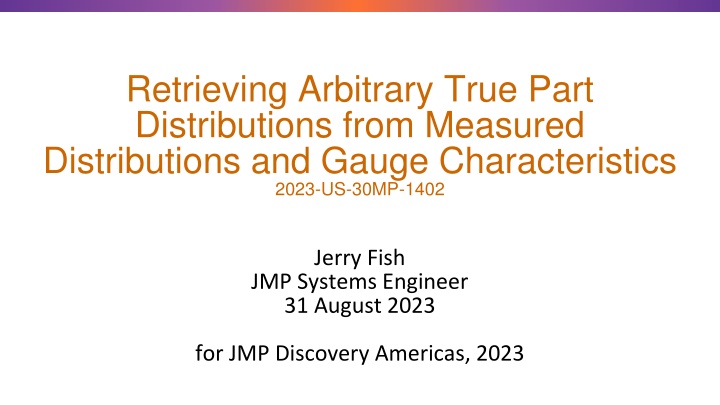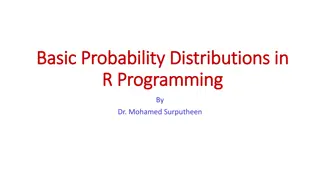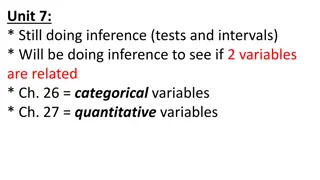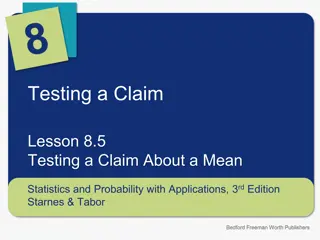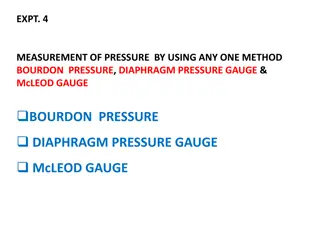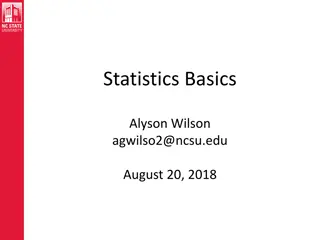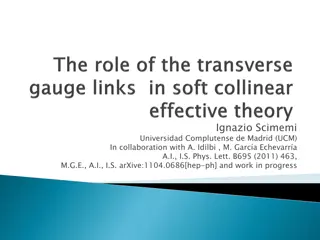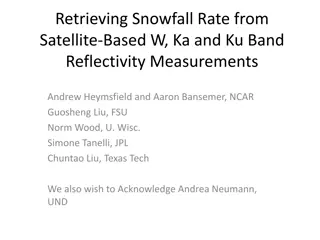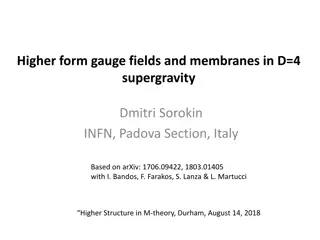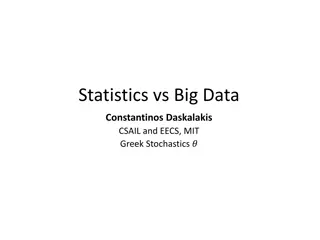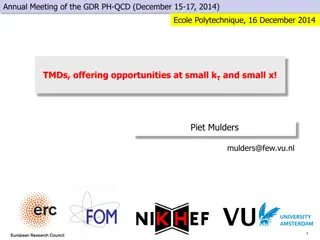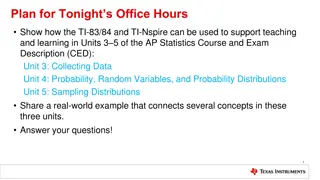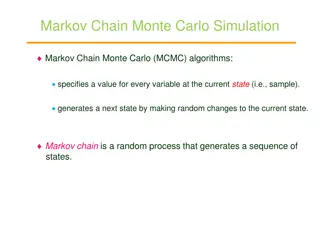Retrieving True Part Distributions: Gauge Insights
This presentation delves into retrieving arbitrary true part distributions from measured distributions and gauge characteristics, explaining the importance, challenges behind estimation computations, and a demonstration of a new JMP Addin. Understand the need for determining True Part Distribution (TPD) to assess gauge accuracy and costs of errors. Explore why simply subtracting variances may not suffice and the computation intricacies involved in obtaining accurate estimates.
Download Presentation

Please find below an Image/Link to download the presentation.
The content on the website is provided AS IS for your information and personal use only. It may not be sold, licensed, or shared on other websites without obtaining consent from the author.If you encounter any issues during the download, it is possible that the publisher has removed the file from their server.
You are allowed to download the files provided on this website for personal or commercial use, subject to the condition that they are used lawfully. All files are the property of their respective owners.
The content on the website is provided AS IS for your information and personal use only. It may not be sold, licensed, or shared on other websites without obtaining consent from the author.
E N D
Presentation Transcript
Retrieving Arbitrary True Part Distributions from Measured Distributions and Gauge Characteristics 2023-US-30MP-1402 Jerry Fish JMP Systems Engineer 31 August 2023 for JMP Discovery Americas, 2023
Todays Agenda What does this talk address? Why is this important? Why can t we just subtract variances? What s behind the estimation computations? Addin Demo (including algorithm test results and troubleshooting tips) Addin Availability Comments/questions
What does this talk address? Description of a new JMP Addin which: Determines True Part Distribution (TPD) Inputs are: Measured Part Distribution (MPD) Gauge Performance Characteristics % of Parts Gauge Performance Gauge Performance % of Parts ? - + = Characteristics Bias SD (variance, bias) X X True Part Value Measured Part Value
Why is this important? All Gauges are imperfect. We would like to have an idea of True Part Distribution (TPD) so we can understand: Type 1 Errors our gauge is throwing away good parts Type 2 Errors our gauge is accepting bad parts If we knew the True Part Distribution (TPD), we could estimate the costs of these errors. An In-Person paper at the 2023 JMP Discovery Americas Summit describes this process. News Flash: Gauges Aren t Perfect! OK, You Know That. But How Much Is It Costing Your Business? - (2023-US-30MP-1480) We need that TPD to make the assessment!
Why cant we just subtract variances? You can! (If MPD is normally distributed, and Gauge has constant variance and bias across the measurement range) ??????= ?????? ???????? ????= ???? ????????? But what if your MPD is non-normal? Or what if your gauge has unusual characteristics?
Whats behind the estimation computations? Start with a measured part distribution Describe the gauge ??????= ?0+ ?1 ???? ????? + ?2 ???? ?????2 ?????????= ?0+ ?1 ???? ????? + ?2 ???? ?????2
Whats behind the estimation computations? We start with an estimate for TPD (equals actual MPD). TPDest can be put through a transformation representing the gauge characteristics to yield an estimated MPD. Gauge MPDest TPDest Characteristics The estimated MPD can then be compared with the actual MPD (bin-by-bin) to get a RSSerr. The amplitudes in the estimated TPD are then automatically adjusted via the JSL Minimize function until the estimated MPD matches the actual MPD.
Testing Results Input: Parametric Normal, =0, =3 Gauge: =2, Bias = 1+0.03*PV Output: Parametric Normal
Testing Results Input: Uniform Distribution Gauge: =2, Bias = 0 Output: Arbitrary Distribution
Addin Troubleshooting Gauge SD too large in comparison to MPD resolution Gauge SD large in comparison to MPD resolution Some odd combinations can cause untrappable errors. Chunky MPD s Long convergence times (particularly for arbitrary TPD s)
Addin Availability The addin is attached to this recorded presentation. The addin can be found in the JMP Community File Exchange.
Comments/Questions Please post comments/questions in the space below the video, or with the addin in the JMP Community File Exchange Suggestions for improved GUI. Suggestions for changes in outputs. Suggestions for more parametric MPD s or TPD s. Problems encountered. Please include a complete description of how the problem occurred, including (if possible) a non-confidential sample input file that can be used to replicate the problem. Please include @JerryFish in your comments, so I get a notification.
Thank You And don t forget to check out the accompanying Discovery Paper! News Flash: Gauges Aren t Perfect! OK, You Know That. But How Much Is It Costing Your Business? (2023-US-30MP-1480)
